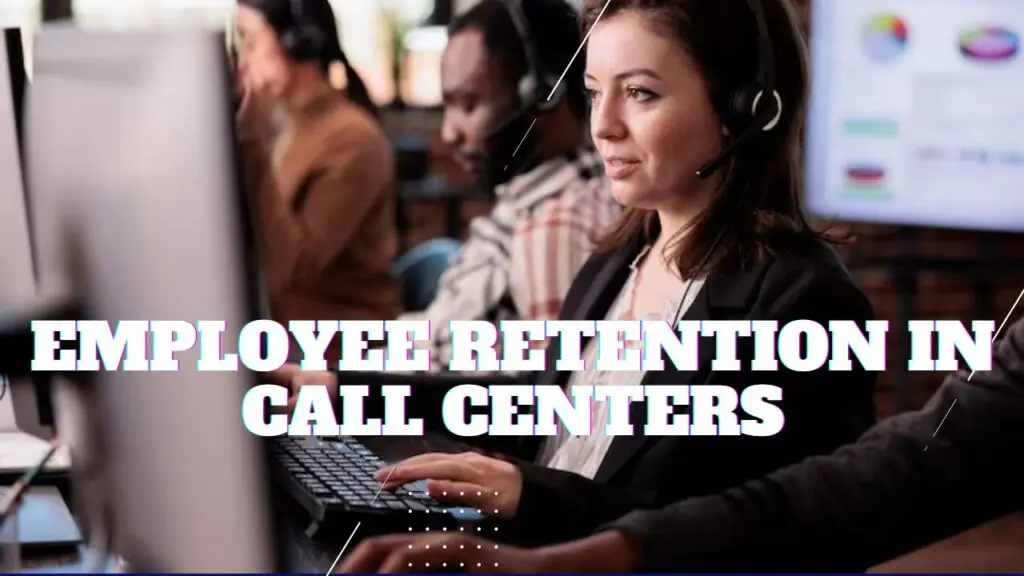The nature of the remote call center situation has changed in the last few years. Over the years, with more firms opening up to the remote working culture, call centers have learned to cope with this change. So the advantages of remote call centers are as follows: With remote call centers, one is ready to reduce the cost together with preparing flexibility, but as with any other things, they also have their own problems. In this guide, designed specifically for remote call center management and optimizing call center data, the main challenges are revealed and tips on their effective elimination are provided so that your team can continue being as productive as possible.
Table of Contents
Understanding Remote Call Center Challenges
Communication Barriers
Efficient communication is the key to any call center’s efficient functioning. Yet, receiving and sending messages without misinterpretation and with the proper working of the signal path is not always possible if the location selected is rather remote. There are always challenges of communication and cooperation due to distance when teams are pulled from different parts of the globe. Proper management of call center data adds another layer of complexity to this communication challenge.
Timely, effective, and appropriate communication is crucial here. These platforms include the use of applications like Slack, Microsoft Teams, and Zoom to create efficient communication. It is preferable to have brief team huddles where one has to be on the same page as the other either in individual or group settings. Another good practice is also to make team members create comfortable conditions for their communication when they can freely share their portfolios and difficulties.

Technology and Infrastructure
Telecommunication or the use of various gadgets to communicate constitutes the main setting of remote call centers. In particular, there is a strong focus on the proper functioning of technologies, which is crucial for work: remote employees are aware of such problems as low-quality internet connections, failures in software applications, and insufficient-quality equipment. Such challenges often affect the normal running of an organization and efficiency.
These tactics entail a solid investment in technology. Make sure your team is provided with a good VoIP of its kind and an up-to-date CRM at that. Also, integrate sound features of data security to ensure that any data collected does not fall into the wrong hands. There is also a tech support team to deal with any technical problem that may arise thus reducing time wastage.
Performance Monitoring
Supervising performance from a distance is equally difficult in its unique way. Nevertheless, the absence of the necessity to have supervisors physically on the premises may lead to problems in controlling the productivity of the agents as well as in terms of quality assurance.
This process benchmarks with the use of analytics and KPIs to gain a further understanding of the effectiveness of the team. The use of analytics tools in areas such as call volumes; average handle time; and customer satisfaction scores. This is because providing appraisal in a timely manner followed by feedback will keep the employees on their toes thus enhancing their productivity.
Employee Engagement and Morale
Telecommuting appears to effectively lower employee stress and increase productivity, although it can result in loneliness. For a B2B data provider, it may not be easy to keep up an objective of togetherness and ensure motivation amid virtual communications.
There is no doubt that the key is to work on building a culture of remote work. Socialize employees online and reward them for their good performance to make them feel valued in the organization. Promoting opportunities related to career advancement, such as training and skill enhancement, can also boost spirit and satisfaction in the workplace. Open and frequent discussions are essential to address any issues early and keep your team aligned.
Effective Communication Strategies
Implementing Clear Communication Channels
A major element in the management of a remote call center is the communication that takes place in the organization. It is also important to remain flexible and adapt to the new strategies as the situation requires. Using communication tools thus means that methodologies such as the use of applications like Slack, Teams from Microsoft, as well as Zoom, can be adopted simply because they support interactivity and real-time engagement.
An individual should hold daily, weekly, or as required, team meetings as this way everyone gets updated and is on the same page. It is best to utilize these to cover goals, reporting, and cessation as well as deliberation of incidences that may occur. Moreover, facilitates employees to make use of these tools to discuss matters that are not necessarily work-related or briefly catch up with others to minimize the feeling of social isolation.
Encouraging Open Dialogue
Solving communication issues in a workplace setting requires that one adopts a liberal approach to discussions. Identify areas where participants can speak openly about feedback, ideas, and concerns they may have about the group and the tasks assigned to it. This may be in the form of feedback sections, filling out unknown surveys, or even daily/weekly follow-up meetings.
Education in virtual communication is also required and should form part of the training process. Train your employees in the right strategies that would be needed to make communication smooth digitally. This encompasses knowing how to establish the type of details that are to be communicated between written texts and acknowledging the ways of viable video conferencing.
Enhancing Technology and Infrastructure
Investing in Robust Technology
The technological factor is very critical in the proper functioning of remote call centers. Sound and robust VoIP systems, CRM and other software and other business-related tools to be installed for the best functionality. Make sure you have provided the right quality equipment that your team uses in their work such as headsets and computers.
Another important factor of the technology structure is data security. One should integrate the necessary security measures to manage and safeguard customers’ information as well as meet all the requirements of data protection legislation. It is advisable to keep the users updating the application and do sanity checks on security vulnerabilities frequently.
Troubleshooting and Support
One general requirement is the presence of a specialized source of technical support to solve all the emerging issues. This team should always be around to offer support for issues that are likely to prevail, thus reducing time loss and enhancing proper running.
Teach your employees about the typical IT problems they are likely to face and methods to solve them. This can assist them in handling simple problems on their own, hence minimizing the number of issues reported to the IT department, which restrains the latter to more intricate matters. Additionally, integrating lead generation strategies can ensure the continuous growth of your business by identifying and attracting potential customers.
Optimizing Performance Monitoring
Leveraging Analytics and KPIs
Evaluation of workers is also essential to ensure that they stick to the quality of the services expected of a remote call center. Using analytics and predetermined KPIs one is in a position to assess the performance of his/her team and possibly discover weak links.
Leverage technological devices in recording and monitoring various parameters like the volume of calls handled, average time spent per call among others, and the level of satisfaction of their clients. These measurements will help one or more employees assess the productivity and efficiency of the teams and make correct decisions for the improvement of these indexes.
Regular Reviews and Feedback
Probably the most important element of every employee in any organization is the performance appraisal done frequently. Other procedures include performance appraisal and evaluation, where you also review employees’ performance periodically and discuss coaching, training needs, and objectives and targets for the next period. These reviews should be a way to celebrate successes, talk about possible problems, and plan improvements.
Positive criticism is another factor that can assist you in the process of team building and achievements. Use corrective feedback that is procedural, precise, and highlights what ought to be done differently. It is crucial to let your team understand every detail of feedback and how it will guide problem-solving moving forward, to motivate the members.
Improving the Employee-Level Participation and Motivation
Building a Positive New Norm for Remote Working
Creating and maintaining engagement and employee morale in the remote working environment is not an easy task at all. Sustain a positive culture of remote working through the encouragement of the organization’s team-building activities, rewards, and social gatherings. All activities can help create togetherness and develop a team identity.
Always reward and encourage your employees often, because this will ensure that you are motivating your employees towards better performance last but not least do not forget to appreciate the hard work of your employees. There are different measures, and one of the most effective is to organize programs that focus on positive events such as long-service anniversaries, successful project completion, etc.
Providing Career Development Opportunities
Promoting career development to employees is important in raising employee’s interest and level of satisfaction. Develop training and skill development programs that will ensure your people are professionally developed and consequently move up the ladder. Promote and recommend employees to take certification classes, and also suggest they attend workshops and other related events to enhance their knowledge of various practices in the field.
Help enhance professional development in the organization by providing professional development opportunities and filling vacancies with internal talent. This could also aid in the ability to keep key organizational talent within the company and create that natural organizational loyalty that is so important among employees.
Customs & Future Trends for Remote Call Centers
Setting Clear Expectations
It is highly necessary to define contract expectations to guarantee that your remote call center and data provider will be successful. Ensure that there are clearly described duties when it comes to both sections of the organization, and set up objectives that will be achievable on behalf of the team.
Inform these expectations clearly and make sure that all people are aware of their roles and KPIs. These expectations must therefore be reviewed and revised if necessary from time to time in order to reflect changes in the business environment or the members of the relevant team.
Flexibility and Work-Life Balance being observed
These incorporate flexibility and work-life balance as key influences of the staff and their corresponding efficiency. Some of the recommendations from the study include allowing employees to work from home, and giving employees flexible schedules to accommodate different time zones. Ensure the workforce vacations and/or otherwise disengages in order to avoid or lessen burnout or stress levels.
Introduce and establish policies that will aid the balance and provision of time for work and personal, and family responsibilities, including shift work, work-from-home arrangement, and paid vacation. Focusing on the employees’ well-being is vital to achieving a beneficial setup for working remotely.
Conclusion
The evolution of remote call center is both a promise and a threat. If you recognize and solve its issues, you can guarantee your remote call center is operational and effective. Strategies such as communication, technology, performance, and employee engagement are some of the procedures that will reduce the amount of remote call center obstacles.
Therefore, as remote work reduces, flexibility and being forward-looking will be the hallmarks of success. Stand up for the new kind of remote work culture, and discover how your call center can successfully evolve in the digital world.



